Uncommon Folk: Traditions in American Art January 31–May 4, 2014 Milwaukee Art Museum
The unprecedented selection of paintings, drawings, sculptures, photographs, textiles, and furniture featured in this exhibition offers unexpected beauty, power, whimsy, and wonder. The authentically American artistic expression identified in the work of folk and self-taught artists in the late nineteenth and early twentieth centuries gave American art its own voice separate from the classical European style that dominated the art world at the time. These artists, operating outside the art establishment, created work that was influenced by their communities and cultural traditions, rather than by art historical movements.
Uncommon Folk: Traditions in American Art celebrates this independent streak in American art and highlights the full depth and breadth of the Museum's world-class collection of folk and self-taught art, from nineteenth-century drawings to contemporary quilts from Gee's Bend, Alabama. Some of the works included were created within the cultural traditions of a particular geographic area in the United States. Charley Kinney's paintings take folk tales from the Appalachian Mountains as their subjects, while José Benito Ortega's sculpture is carved in the santos tradition of the Southwest. Other traditions are rooted in the function of an object, such as walking sticks and decoys, and are represented by both historical and contemporary examples. Among the works that will be shown for the first time are a bevy of fish decoys and the eight-foot-tall drawing Crucifixion of Christ by Chicago artist Charles Steffen.
The Museum's commitment to the work of folk and self-taught artists began as early as 1951 with the gift of two paintings by Wisconsin artist Anna Louisa Miller. During the 1960s and 1970s, when very few American museums were acquiring folk and self-taught art, the Museum’s collection was significantly expanded with the purchase of a number of important works, including a major group of Shaker furniture. In 1989 the generous gift of the Michael and Julie Hall Collection of American Folk Art positioned the Museum as a leader in the folk and self-taught field, a position further established with the more recent gifts of the Anthony Petullo Collection and the Lanford Wilson Collection.





















